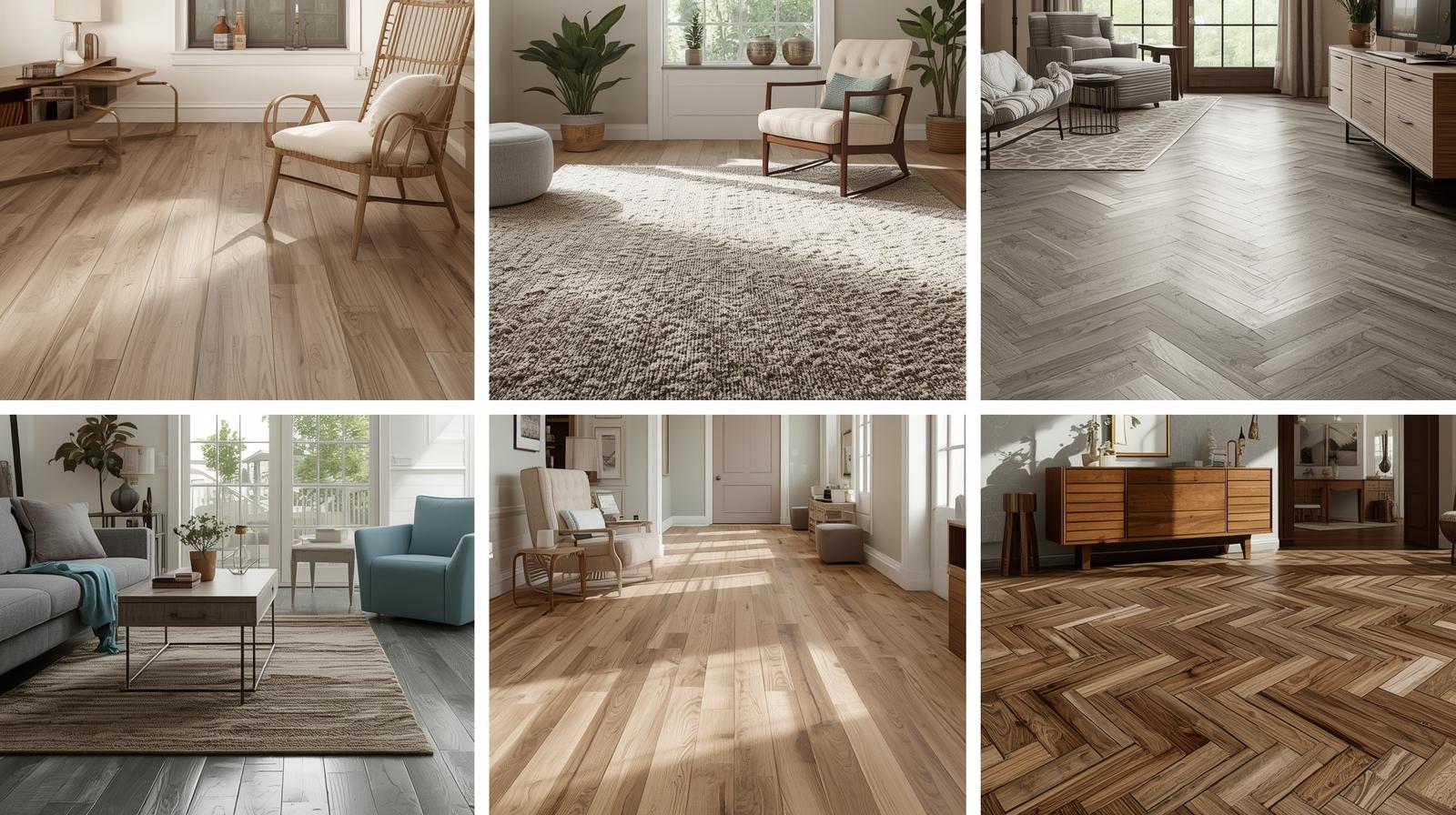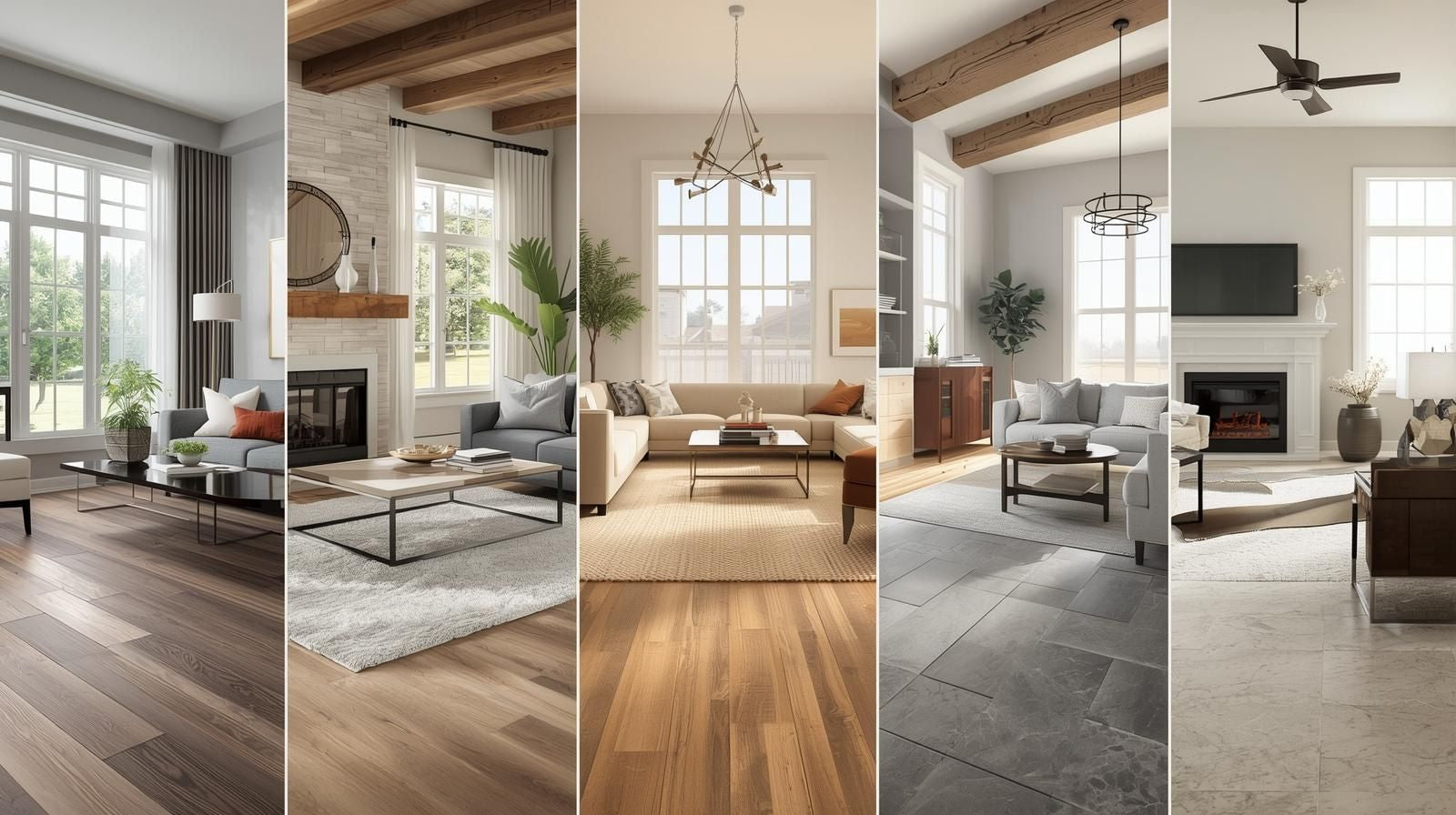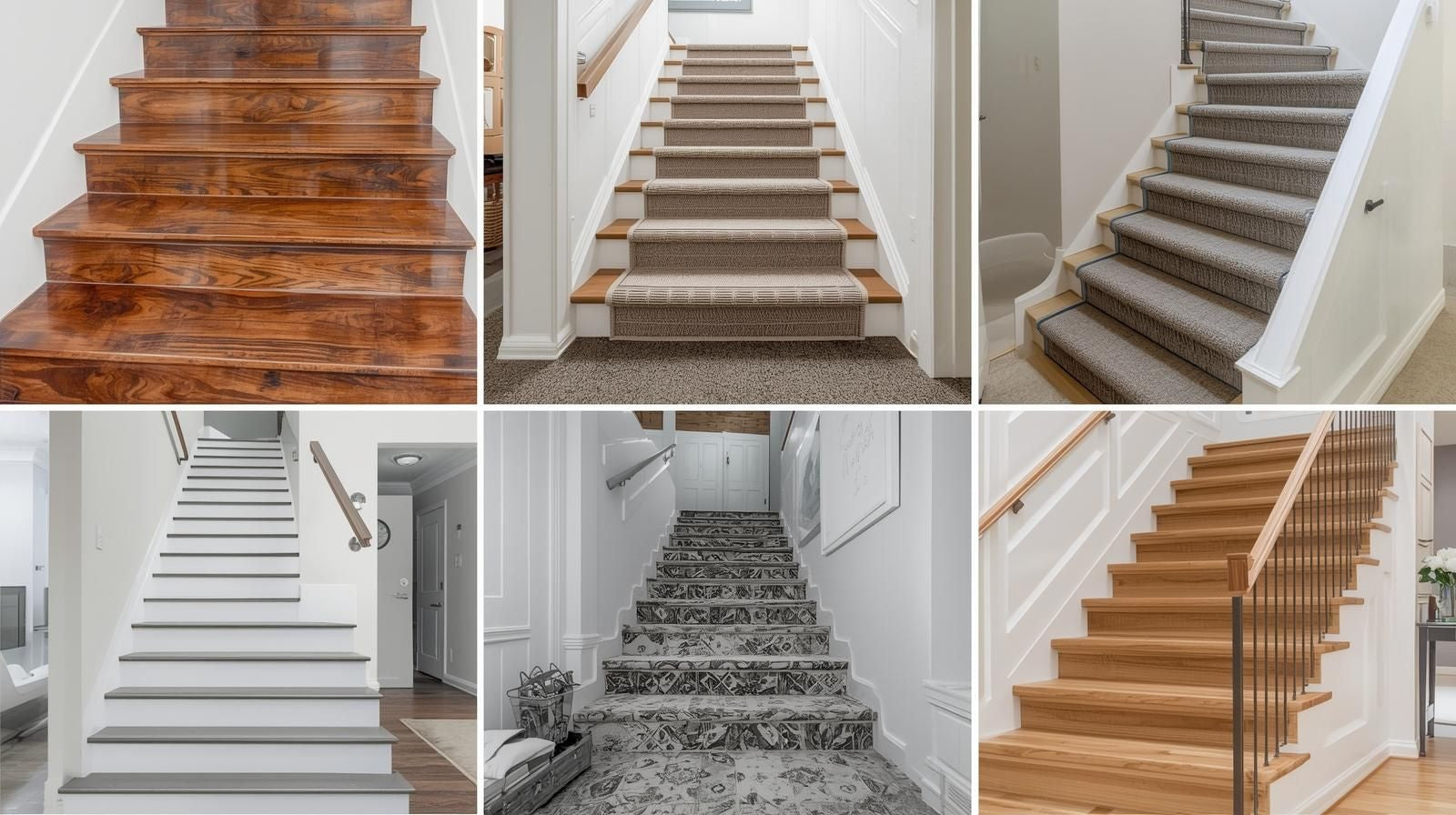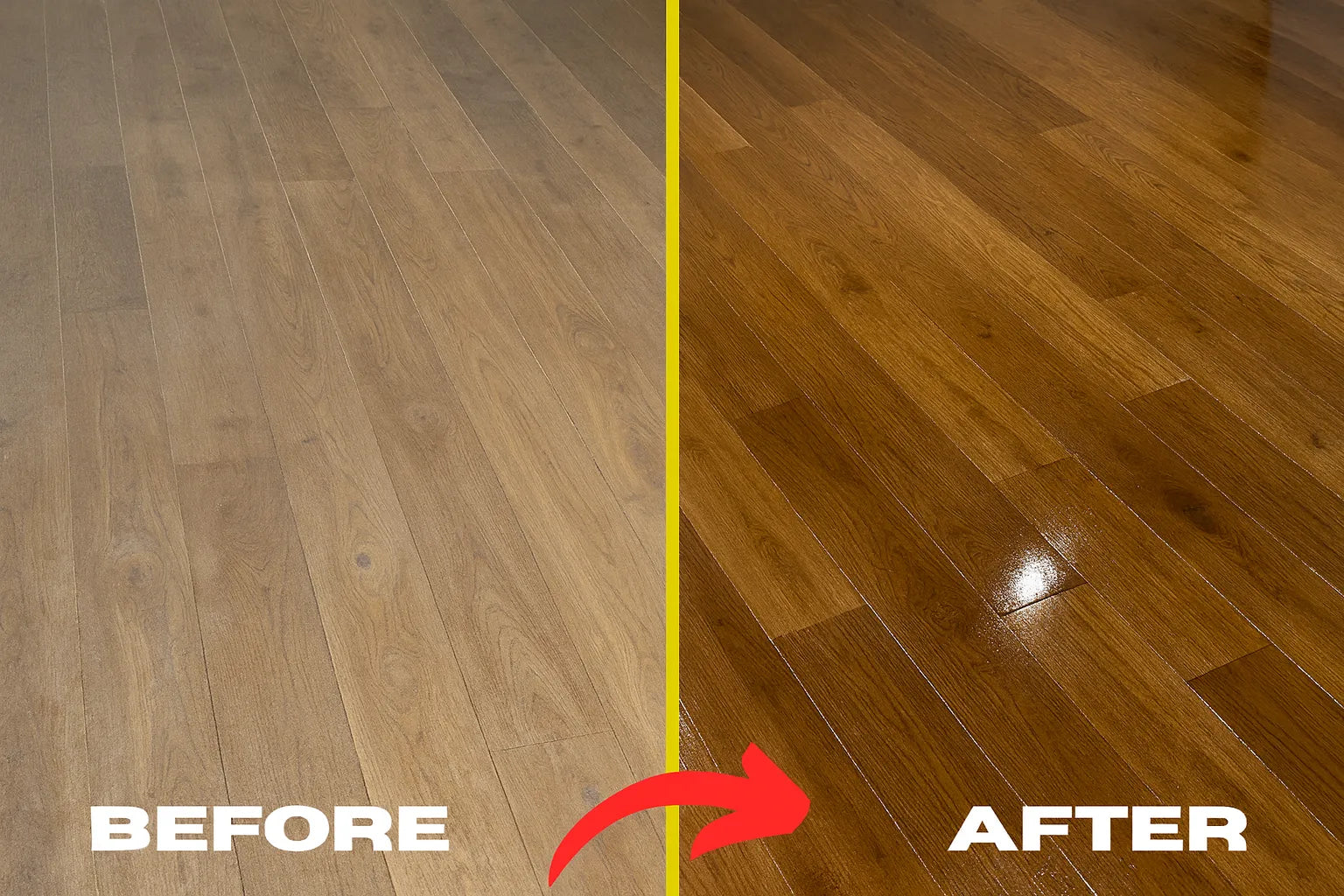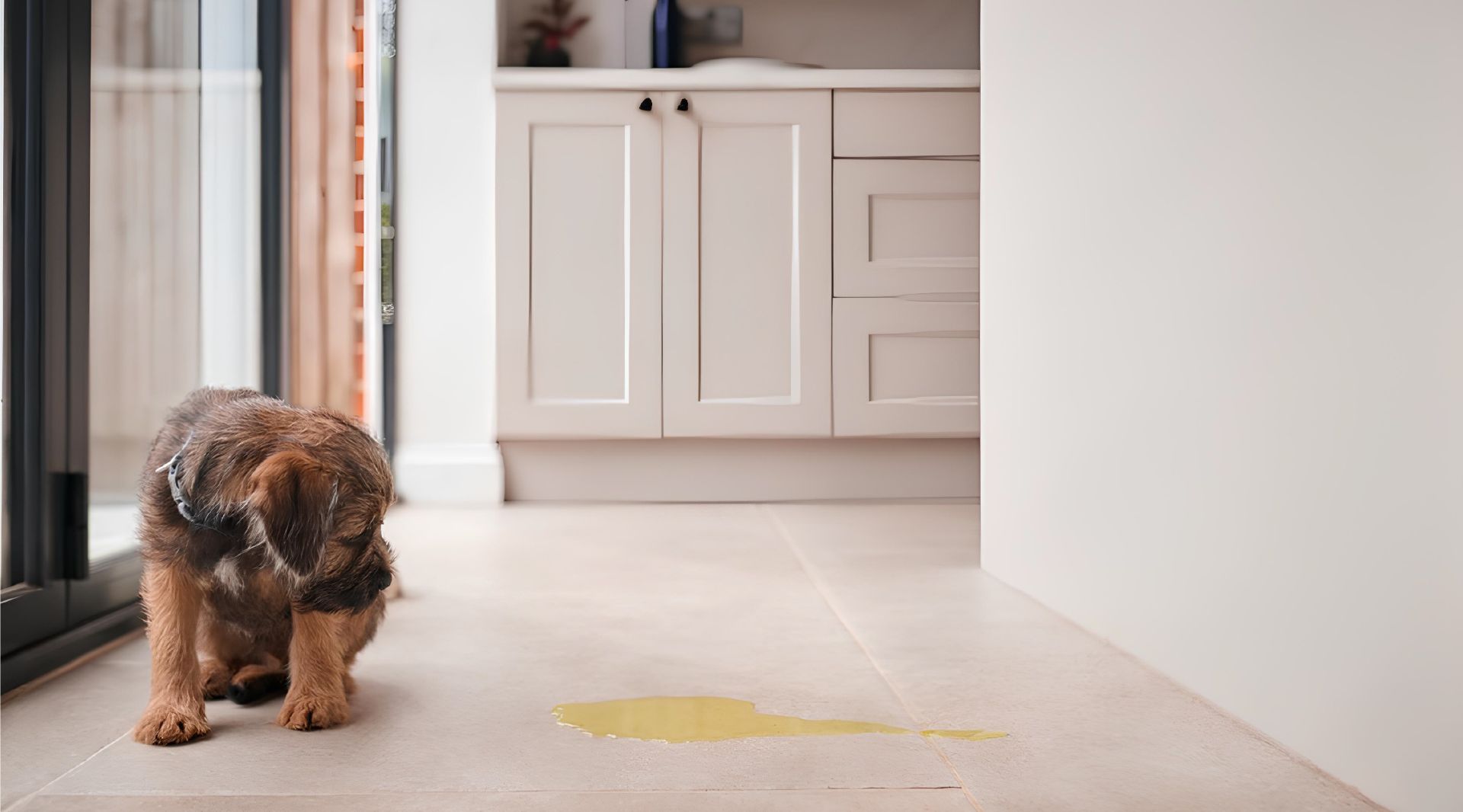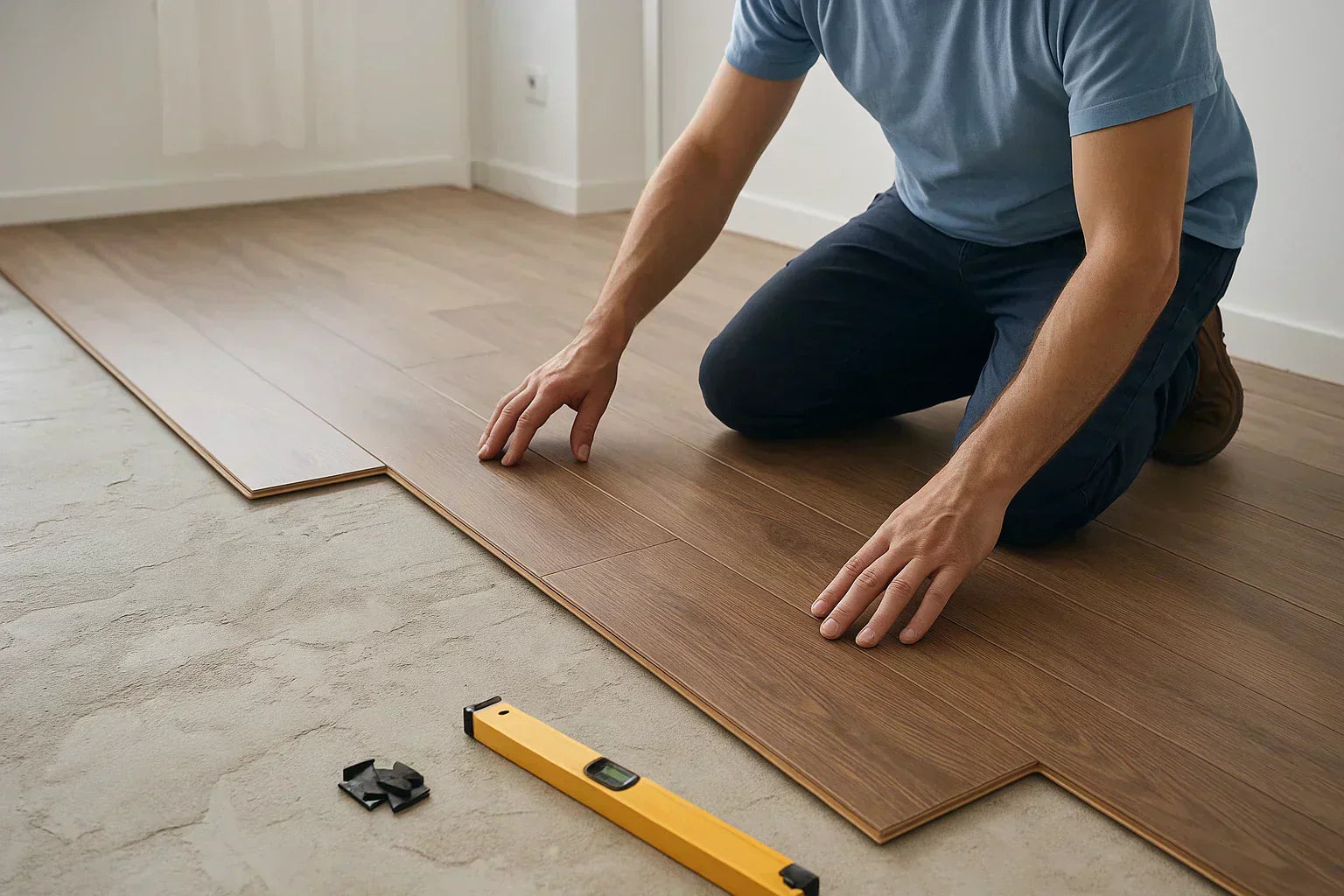The floor of your place is the statement of your home’s style, comfort, and even its long-term resale value. The wrong flooring ends up with scratches, dents, endless cleaning headaches, and worse, money down the drain.
Every flooring option out there, hardwood, laminate, vinyl, tile, or carpet, claims to be long-lasting, affordable, stylish, and kid and pet-friendly. Yeah, they all say the same thing. And that’s where homeowners like you get stuck. What really works? What actually holds up when life gets messy?
This post is about the top residential flooring options, from materials and construction to costs, maintenance, and design trends. Keep reading so you can decide the right one for your home, either for high-traffic areas or a home prone to humidity.
Key Factors to Consider Before Choosing Residential Flooring

Choosing the right floor for your home requires considering some key factors before investing.
1. Budget – Upfront Cost vs. Long-Term Value
Budget isn’t just about what you swipe your card for at the store, NO. Flooring comes with its own installation fees, underlayment you didn’t even know you needed, finishes, and then those sneaky long-term maintenance costs that creep up later.
Take hardwood, for instance. Sure, it comes with an upfront hefty price tag per sq. ft. installed, but hardwood isn’t just a floor; it’s basically an investment. Take care of it and it can last for decades, even add resale value when you decide to cash out on the house.
Now, compare that to laminate or vinyl plank. They’re the “budget-friendly” if you’re looking for something affordable per sq. ft. installed. But it may need replacement sooner. Don’t just compare what you pay today, compare what it’s worth tomorrow.
2. Lifestyle – Kids, Pets, Traffic Areas
Your flooring needs to handle real life, juice box spills, muddy dog paws, and endless foot traffic every single day.
Families with pets or kids usually find scratch-resistant and waterproof floorings like vinyl plank or tile to be the smarter option.
Carpet feels cozy in bedrooms, though it can trap dust and allergens. Hardwood brings beauty to living or dining spaces, but it might dent quickly in those busy hallways.
3. Climate & Location – Humidity, Temperature Swings
Where you stay makes a big difference. In damp basements or humid areas, solid hardwood isn’t the best pick; it can easily bend and warp. Consider engineered wood, vinyl planks, or even tile instead.
If you’re in colder areas, carpet works well because it gives extra insulation and cozy warmth. Always think, how’s this flooring really going to handle in your climate?
4. Maintenance – Easy-Care vs. High-Maintenance Options
Some flooring choices demand daily attention, like you’ll need to keep refinishing hardwood or sealing that stone tile again and again. Others, though, like laminate or vinyl, only ask for a quick sweep and an occasional mop.
Now, if your goal is something easy-to-handle, better stick with water-resistant or scratch-proof flooring, as it saves you headaches. But, if you love the natural look of stone or maybe some fancy exotic wood, just know it comes with more maintenance on your plate.
5. Design & Aesthetics – Colors, Textures, Finishes
Flooring isn’t just where you walk on; it’s what sets the ambiance of the whole room and pulls together the paint, furniture, and even the lights.
Wide plank hardwood has that farmhouse warmth, but it also works if you want a rustic-modern vibe. On the other hand, patterned tile throws in more personality, perfect for kitchens and bathrooms that need energy and character.
Lighter floors can make a small space feel bigger and open, while darker tones bring more depth, coziness, and a grounded feel. It’s not only about the flooring material, but color, texture, and finish, all come together to make the final look truly yours.
6 Best Residential Flooring Materials
Flooring materials all come with their strengths, weak spots, and a price tag that can either stretch or break your budget. Here are the most popular flooring ideas for your home.
1. Hardwood Flooring

Hardwood is still king when it comes to house flooring materials. Real planks cut right out from oak, maple, walnut, or even cherry; they are solid and classic in every way. The natural grain shows richness that no surface ever matches, and you get a floor that can be sanded down, refinished, and truly lived on for many years.
It feels warm under the feet, adds more value to your property, and still looks sharp, no matter if your design leans modern minimal or more of that rustic farmhouse vibe.
Solid Wood or Engineered Hardwood Flooring
Here’s where you've got to choose smart between engineered hardwood and solid wood flooring. Solid hardwood? That’s one solid piece of timber, durable but prone to warping when moisture shows up. Engineered hardwood flooring? That’s a layer of real wood on top of a stable plywood base, better for basements or climates where humidity is a daily fight. Engineered flooring might not last quite as long as solid, but it’s less fussy, less moody when the weather swings.
Hardwood flooring gives natural beauty, customizable with stains and finishes, strong underfoot, long-lasting, repairable through sanding, and hypoallergenic since it doesn’t trap dust. The best engineered hardwood flooring brands offer a real wood layer on stable plywood, better for basements or humid climates.
But it is expensive upfront and can warp in moisture-heavy environments. It’s also noisier underfoot without underlayment.
Ideal Spaces: Living rooms, dining rooms, bedrooms, spaces where style matters and moisture is not crashing the party.
Cost range: Expect $6–$15 per sq. ft. for materials, and $8–$20 per sq. ft. once you factor in installation. Premium exotic woods? That’ll cost more.
Considerations You Must Follow
If resale value is high on your list, hardwood is unbeatable. But if you’ve got dogs with sharp nails or toddlers with toy trucks, get ready for scratches. Area rugs and felt pads under furniture become your best friends.
Shop Engineered Hardwood Flooring
2. Laminate Flooring

Waterproof laminate flooring exploded in popularity because it brings the look of hardwood. Built from a composite wood base, a printed photo layer that mimics wood or stone, and a tough wear layer on top. Click-lock installation is DIY-friendly.
Laminate flooring gives 100% moisture protection, is budget-friendly, tough against scratches, resistant to fading, and simple to put down with click-lock floating planks. It is good for daily use, which makes it fit for busy homes. Laminate flooring styles are so flexible that they are suitable for almost every space except bathrooms.
But it may sound hollow or kind of noisy under the feet if the underlayment isn’t of quality. Different from hardwood, it can’t be refinished; when worn out, it needs full replacement.
Lifespan ranges from 10–25 years, shorter than that of hardwood or tile.
Ideal Spaces: Perfect for living rooms, home offices, and spare bedrooms. Not ideal for bathrooms or basements with moisture unless it’s marketed as water-resistant laminate.
Cost range: $2–$5 per sq. ft. for materials, $5–$8 installed. Easy on the pocket, but don’t expect it to last generations. Average lifespan is 10–20 years, depending on traffic.
Shop Waterproof Laminate Flooring
3. Vinyl Flooring (Luxury Vinyl Plank & Tile)

Vinyl has leveled up big time. No longer the flimsy sheet people used to have in kitchens. Today, there are different types of vinyl flooring, like:
- LVP: wood-look planks, click-lock installation, warmer feel underfoot.
- LVT: tile-look squares, some with groutable edges for realism.
- Sheet vinyl: budget option, one continuous sheet, good for bathrooms with lots of spills.
It’s waterproof, durable, and thanks to modern printing technology, it can look frighteningly close to real wood or stone.
Luxury vinyl plank flooring is strong, practical, and made for everyday living. It’s completely waterproof, safe for kids and pets, and much softer than hard tiles. This type of floor handles heavy use without wearing down fast. You can pick designs that match almost any style you like. It’s easy to install on your own and doesn’t ask for much care once it’s in place.
While durable, it can scratch with heavy furniture, feels less “authentic” than real wood or stone, and low-quality products may off-gas VOCs. It also doesn’t carry the same resale prestige as hardwood. Lifespan ranges from 15–30 years.
Ideal Spaces: Basements, kitchens, bathrooms, laundry rooms, literally anywhere water or heavy traffic is expected.
Cost range: $2–$7 per sq. ft. for LVP/LVT, $5–$10 installed. A sweet spot between affordability and durability.
Shop Waterproof Vinyl Flooring
4. Tile Flooring

Tile flooring has been around for ages because it’s strong and holds up in any space. You see it in ceramic, porcelain, and natural stone. Ceramic stays affordable, porcelain’s thicker and fights water better, and natural stone like marble, slate, travertine, it’s raw beauty you won’t copy anywhere.
Tile excels in durability but demands consideration. Tile flooring comes in different types based on the material used in manufacturing. It is waterproof, fire-resistant, easy to clean, and nearly indestructible when properly installed. Great for radiant heating systems.
Tile feels cold and hard when you step on it. Grout lines demand sealing and scrubbing. Putting it in takes serious attention and money, plus its weight can strain weaker floors.
Ideal Spaces: Bathrooms, kitchens, laundry, mudrooms, entryways. Porcelain is even tough enough for outdoor patios.
Cost range: $4–$15 per sq. ft. for ceramic/porcelain; natural stone $8–$20+. Installed, you’re looking at $8–$20 per sq. ft. or more.
5. Carpet Flooring

Carpet is a soft flooring option made of fiber tufts woven into a backing. It comes in styles such as
- Cut pile: soft, plush, perfect for bedrooms.
- Loop pile: durable, hides footprints, great for high-traffic.
- Berber: loop with flecks of color, casual and long-lasting.
Fiber types include nylon, polyester, wool, and olefin. Carpet provides comfort, warmth, and noise reduction unmatched by hard flooring.
Carpet adds comfort that hard floors can’t give. It’s soft, quiet, and helps a room stay warm. It also fits into most budgets and comes in countless looks. But here’s the catch: keeping it clean takes work. A single spill can turn into a stain.
Carpet stains fast, gathers dust, and loses shape when walked on too much. Cleaning isn’t optional; you’ll need regular vacuuming and sometimes deep cleaning. For anyone with pets or allergies, it becomes a bigger problem.
Lifespan is typically 5–15 years, depending on quality and traffic.
Ideal Spaces: Bedrooms, playrooms, family rooms. Basically, anywhere you want warmth and comfort underfoot.
Cost range: $2–$7 per sq. ft. for materials; $4–$12 installed, depending on fiber and padding.
6. Eco-Friendly Flooring Options - Bamboo, Cork, Reclaimed Wood, & Recycled Materials

More people now want flooring that respects nature while adding beauty to their homes. Bamboo, cork, and recycled flooring are trusted picks, backed by certification from the Forest Stewardship Council (FSC).
a. Bamboo Flooring
Bamboo looks like wood, feels like wood, but the truth is it’s not real wood – it’s a super fast-growing grass, making it a smart, sustainable pick. The charm of bamboo flooring lies in its strength and stylish appeal; certain types even end up harder than oak.
It gets made by slicing down bamboo stalks, then pressing them tightly with adhesives, turning them into planks that carry a clean and warm look.
The plant grows back in just 3–5 years (so yeah, very renewable), handles moisture better than some hardwoods, and comes out pretty budget-friendly. Still, quality shifts a lot, and cheaper options might scratch or dent quickly.
Perfect for living rooms, bedrooms, and offices, bamboo usually costs $5 to $9 per sq. ft. With proper care, you can expect it to last 20–25 years.
b. Cork Flooring
Cork comes straight from the bark of cork oak trees, and the beauty is, you don’t have to cut the tree down to get it. People who care about the planet often choose cork flooring. It feels soft and slightly springy under your feet, which makes moving around the house more relaxing. Cork flooring is made by crushing the material, pressing it, and then baking it into sheets or tiles. A finish is added so it can stay strong and last for years.
One big plus, cork is naturally antimicrobial; it fights off mold and mildew without you doing a thing. It’s also a champ at insulation and great for absorbing sound, so no annoying echo bouncing in your living room. But sunlight can cause fading, heavy furniture might leave dents, and every now and then it needs resealing to stay in shape.
Ideal spaces include bedrooms, family rooms, and basements. Price ranges $3 to $8 per sq. ft., and with proper care, cork can give you a solid 15–25 years of performance.
c. Reclaimed Wood Flooring
Floors built with reclaimed wood carry a past that adds real warmth to a home. The boards were once part of barns and warehouses, pulled out and reused instead of being wasted. Age gives them character, scuffs, patina, and texture shaped by life before.
When laid down, no two planks feel alike, and that makes the floor one of a kind. Sustainability is clear – you’re reusing wood rather than cutting fresh trees. Structurally, it’s real hardwood, but with added charm.
Yes, it’s eco-friendly, extremely durable, and unique in appearance. It also adds resale value to your home. But it can be pricey, supply is limited, and installation sometimes requires special care due to variations in plank size.
Perfect choice for dining areas, living rooms, and even custom builds. Prices usually range between $8 and $14 per sq. ft. With good care, it can last more than 50 years.
d. Recycled Materials Flooring
You know that recycled flooring takes everyday waste and shapes it into something new. Tires, bits of glass, metal scraps, and even plastic that once seemed useless, now built into flooring that feels modern and responsible. This type of floor helps the planet while adding character to spaces. Think of gyms lined with durable rubber, kitchens shining with glass tiles, or planks that copy the warmth of real wood.
Extremely eco-friendly, durable, slip-resistant, and low-maintenance. The style options can be limited depending on material type, and comfort underfoot varies.
Gyms, playrooms, kitchens, and bathrooms are some of the best spots for rubber flooring. Costs range between $2 and $12 per sq. ft., based on the material used. Expect it to last 20–30 years, sometimes longer if it’s recycled rubber.
As a trusted flooring retailer, we guide homeowners to look at two things: quality of material and brand reliability. Picking a known manufacturer gives peace of mind. You get strong designs, warranty coverage, and durability that keeps up with busy daily life.
How Much Does Residential Flooring Cost?
Costs for residential flooring can go low or sky-high. The difference comes from the material, how it’s laid, and the quality chosen.
Homeowners usually spend $3 to $22 per sq. ft., complete with labor and product. Carpet and laminate often keep things budget-friendly. Hardwood, tile, and luxury vinyl sit a step above.
Stone or advanced engineered wood climb to the highest end. Choosing smart means balancing comfort, appearance, and spending limits. Always factor in prep work and installation, since that adds to the bill.
What are the Best Residential Flooring Manufacturers?
The brand name matters just as much as the material. Some top trusted brands include:
- The Shaw flooring is one of the giants in flooring, known for a massive selection of hardwood, carpet, vinyl, and laminate. They’re respected for strong warranties and materials that perform well under real-life household wear and tear.
-
Garrison flooring brings hardwood that feels high-end but doesn’t push you out of budget. The planks show off beauty and strength together, giving homeowners flooring that lasts and still looks good. People who want both style and value often lean toward this choice.
- Bear Foot Luxury Flooring brings that cozy, rustic charm with collections that lean heavily into natural-inspired designs. Their hardwood and luxury vinyl lines are engineered for comfort underfoot but also stand up to daily life.
- The Coronado flooring line feels more boutique, designed for homeowners who want style and reliability together. Hardwood and laminate choices in this collection are known for bringing a modern look while keeping a strong quality that lasts
- Hallmark Floors offers innovative finishes and textures that make spaces feel stylish without screaming over-the-top. They specialize in hardwood and luxury vinyl, giving homeowners both beauty and resilience in one shot.
- Happy Feet International flooring is a leader in luxury vinyl plank and tile. They’re focused on durability, water resistance, and styles that mimic natural wood or stone at a budget-friendly range.
-
Johnson Hardwood flooring has gained respect for hardwoods that balance eco-care and strength. Their wood comes from trusted sources, so you can feel confident about the choice. At the same time, the floors look elegant and hold up under daily use. It’s flooring made for real life, with style that fits naturally into any room.
-
Morningstar Hardwood flooring is known for being budget-friendly yet still carrying that natural wood charm. The boards stay strong, install without trouble, and make sense for anyone who values both durability and savings.
Which Residential Flooring is the Easiest to Maintain?
Luxury vinyl plank (LVP) and laminate are the easiest. They resist scratches, need simple sweeping/mopping, and don’t require refinishing. Tile is also low-maintenance, but grout needs attention.
What is the Typical Dead Load for a Residential Floor?
Most residential floors are designed for a dead load of 10–12 pounds per sq. ft. (weight of flooring + structure itself), and a live load of 40 pounds per sq. ft. (furniture, people, etc.). This ensures safe performance for all flooring types.
Make the Right Flooring Choice Today!
The best residential flooring isn’t about finding the cheapest or trendiest; it’s about matching your budget, lifestyle, and design preferences with the right material.
- Hardwood brings that natural beauty everyone loves
- Vinyl plank takes the beating from pets and kids without blinking
- Tile keeps its cool in kitchens and baths, while carpet softens up the spaces where comfort really matters
- Eco-friendly picks like bamboo and cork give you style with a conscience.
The real trick? Balancing budget, lifestyle, and style so you don’t overspend on a floor that doesn’t fit your life is only possible when you buy flooring from the best company.
If you’re still weighing the choices, get expert guidance today at (833) 378-4559, and let’s make sure the floor you choose is the one you’ll love walking on every single day.


